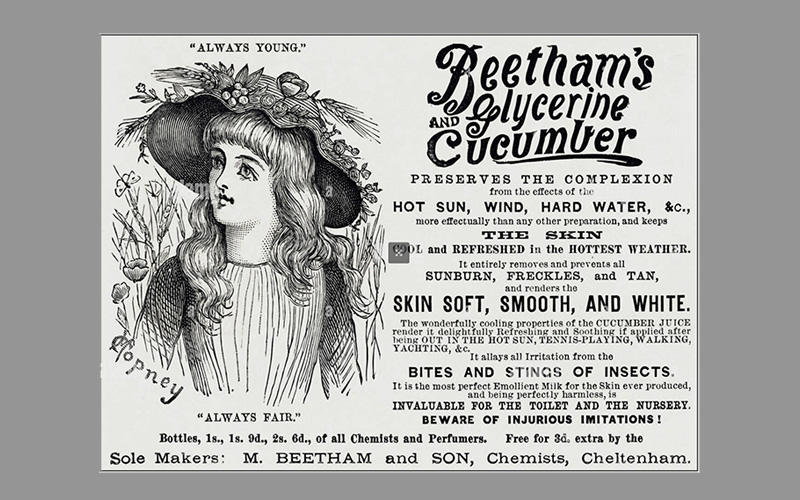If you’ve ever wondered why you can’t just say your lotion “heals eczema” or your soap “cures acne,” the answer lies in a long—and sometimes shady—history of product claims. To really understand today’s restrictions, we need to step back to the era of patent medicines and “snake oil salesmen.”
The Era of Patent Medicines
In the 1800s, “patent medicines” filled store shelves and traveling wagons. These products were often marketed as cure-alls for everything from headaches to tuberculosis. The formulas were usually secret (hence “patent”), and many contained high levels of alcohol, opium, or other substances that at least made people seem to feel better—whether or not they actually helped.
Colorful salesmen, sometimes called “snake oil salesmen,” made wild claims that their potions could restore health, youth, and vigor and even regrow hair. With no laws requiring truth in advertising or proof of effectiveness, the public was left to trust the pitch. The result was consumer harm, wasted money, and eventually a strong demand for oversight.
This video gives a great overview of the evolution of one company and their “miracle” product through the years.
The Birth of the FDA
The turning point came in the early 1900s. Public outrage over unsafe food and false health claims led to the creation of the Food and Drug Administration (FDA) in 1906 under the Pure Food and Drugs Act. Its mission: to protect consumers by making sure products were not misbranded or adulterated.
At first, the rules were basic. Drugs didn’t need to be approved before sale, and companies didn’t have to prove their products worked, they just had to say what was in it. The main focus was simply honest labeling and preventing outright fraud.
From Loopholes to Safety Testing
Unfortunately, unscrupulous sellers still found ways to mislead. Some continued to promise miracle cures without any real evidence. High-profile tragedies—including deaths caused by toxic “wonder drugs”—finally pushed Congress to strengthen the law.
The new Food, Drug, and Cosmetic Act, passed in 1938, required drugs to be shown safe before marketing. The company had to submit proof, and if the FDA didn’t say, “No,” within 60 days, the product could be sold.
Later amendments required not only safety, but also proof of effectiveness. Today, a drug can’t be sold until studies in animals and humans demonstrate both safety and effectiveness for the intended use.
This is why drug development takes years and involves rigorous testing. It’s also why product claims matter so much: a product is considered a drug if it is intended to diagnose, treat, cure, or prevent disease. That intended use is judged by what the maker says about the product—on labels, websites, ads, or even social media.
Cosmetics vs. Drugs: The Role of Claims
So where does this leave soap and cosmetic makers? Here’s the key:
- Cosmetics are products intended to cleanse, beautify, or promote attractiveness.
- Drugs are products intended to affect the structure or function of the body, or to treat or prevent disease.
The line between them is determined by the intended use – in other words, what you claim the product will do. If you say your lotion “moisturizes dry skin,” that’s cosmetic. If you say it “heals eczema,” that’s a drug claim—and your lotion would need full FDA drug approval.
Soap has its special carve-out; true lye-and-oil soap marketed only for cleansing is exempt from the definition of a cosmetic. But if you say your soap “treats acne,” you’ve moved into drug territory.
Why the Restrictions Matter
Restrictions on claims may feel limiting, but they exist for good reasons:
- Consumer protection – People deserve to know that products making health promises are backed by real science.
- Fair competition – Honest makers shouldn’t be undercut by those making exaggerated claims.
- Trust in the industry – Transparency and accuracy build customer confidence.
When we stick to truthful cosmetic claims, we stay in compliance, avoid regulatory trouble, and build stronger, more trustworthy businesses.
Yes – there are those out there who make outrageous (or even subtle) claims about the miraculous things their “cosmetic” products can do. Even though they haven’t been caught (yet), it’s still illegal. They are taking a huge business risk that you don’t have when you do it right.
Final Thoughts
Restrictions on product claims aren’t meant to hold small makers back—they’re a safeguard rooted in history. From snake oil salesmen to modern miracle cure scams, unverified claims have always carried risks. The rules help us draw a clear line between cosmetics and drugs, and they ensure that when health claims are made, they’re backed by proof.
As makers, our creativity shines brightest when we describe our products honestly and effectively—without crossing into drug claims. That balance protects our customers, our businesses, and the industry as a whole.


Leave a Reply